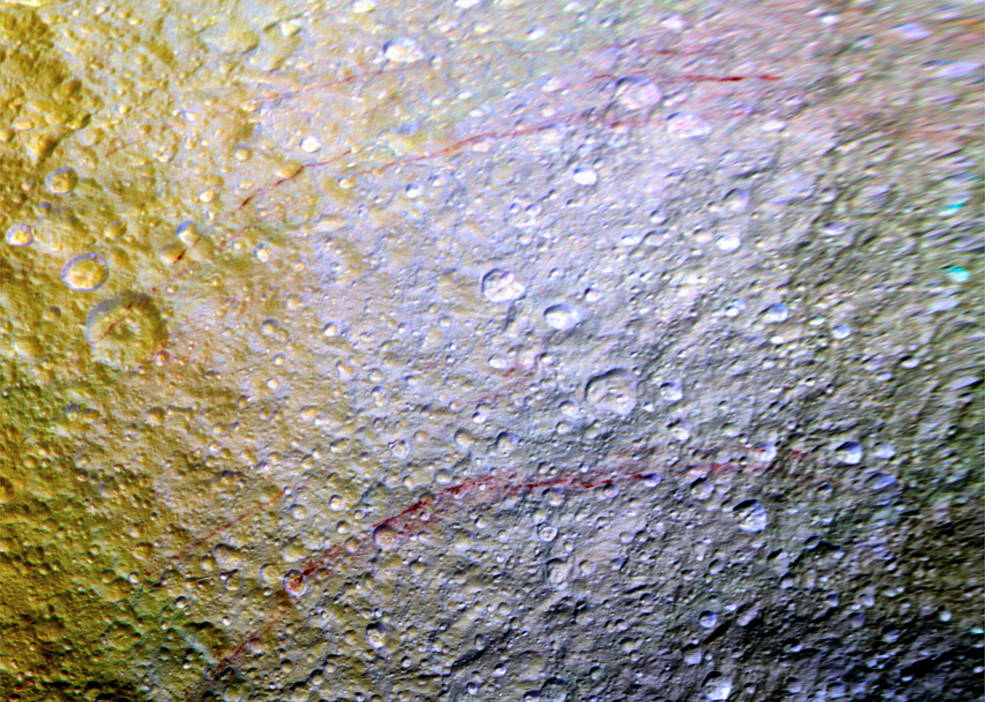
Unusual arc-shaped, reddish streaks cut across the surface of Saturn’s ice-rich moon Tethys in this enhanced-color mosaic. The red streaks are narrow, curved lines on the moon’s surface, only a few miles (or kilometers) wide but several hundred miles (or kilometers) long. The red streaks are among the most unusual color features on Saturn’s moons to be revealed by Cassini’s cameras.
Credits: NASA/JPL-Caltech/Space Science Institute
Like graffiti sprayed by an unknown artist, unexplained arc-shaped, reddish streaks are visible on the surface of Saturn’s icy moon Tethys in new, enhanced-color images from NASA’s Cassini spacecraft. The red arcs are narrow, curved lines on the moon’s surface, and are among the most unusual color features on Saturn’s moons to be revealed by Cassini’s cameras. Images taken using clear, green, infrared and ultraviolet spectral filters were combined to create the enhanced-color views, which highlight subtle color differences across the icy moon’s surface at wavelengths not visible to human eyes. A few of the red arcs can be seen faintly in observations made earlier in the Cassini mission, which has been in orbit at Saturn since 2004. But the color images for this observation, obtained in April 2015, are the first to show large northern areas of Tethys under the illumination and viewing conditions necessary to see the arcs clearly. As the Saturn system moved into its northern hemisphere summer over the past few years, northern latitudes have become increasingly well illuminated. As a result, the arcs have become clearly visible for the first time. “The red arcs really popped out when we saw the new images,” said Cassini participating scientist Paul Schenk of the Lunar and Planetary Institute in Houston. “It’s surprising how extensive these features are.”

